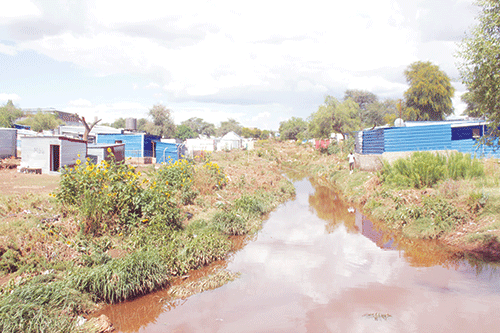KATIMA MULILO - Malaria continues to be a grave health concern in the Zambezi region with a whooping 7 264 positive cases reported from the first week of 2023 to the third week of 2024.
Out of 7 264 malaria cases recorded, a total of 367 were severe cases.
These statistics were confirmed this week by Yolanda Lisho who is Zambezi region’s health acting director.
Unfortunately, she said in 2023, the region reported six deaths while another death was recorded this January.
According to her, hotspots for malaria cases are mostly in the areas of the western Zambezi region.
To be specific, these areas include Kaenda, Kasheshe, Sesheke, Choi, Sibbinda, Sachona, Masokotwani Chinichimane, and Kanono.
“To combat malaria, the region is conducting active case search, malaria surveillance, case management, vector control including net distribution, bionomics, and mobilisation in partnership with stakeholders,” she said.
Lisho advised community members to protect themselves from getting infected with malaria and suggested they make use of insecticide-treated bed nets.
Equally, she advised that a bed net treated with insecticide can provide a physical barrier against mosquitoes and reduce the risk of being bitten while sleeping.
Another piece of advice she gave was for people to wear protective clothing such as long-sleeved shirts, long pants, and socks that can help minimise exposure to mosquitoes, especially during peak biting times at dusk and dawn.
The use of insect repellent containing DEET on exposed skin, which can help prevent mosquito bites, is also encouraged.
Lisho urged people to eliminate breeding sites by removing standing water around homes and communities as that can reduce mosquito breeding sites, decreasing the overall mosquito population.
Moreover, residents are advised to seek early diagnosis and treatment.
“Community members should seek prompt medical attention if they develop symptoms of malaria, such as fever, chills, and flu-like illness. Early diagnosis and treatment are essential for preventing severe complications from malaria,” she said.
Community members are called to support local vector control programmes, such as indoor residual spraying and larval control, to help reduce the mosquito population and prevent transmission of malaria.
According to Lisho, educating community members about these preventive measures and encouraging their implementation can contribute to a comprehensive approach to malaria prevention.
She said Indoor Residual Spraying (IRS) is indeed an effective method for controlling malaria vectors.
“By spraying insecticide on the interior walls of houses and other buildings where mosquitoes rest, IRS helps reduce the mosquito population and thus the transmission of malaria along with other interventions such as bed nets and larval control. IRS is an important tool in malaria control programmes,” Lisho stated.
She also indicated there are challenges with the IRS such as resistance to insecticides.
Over time, she said mosquitoes can develop resistance to the insecticides used in IRS, reducing the effectiveness of this intervention.
Another challenge is access to remote areas.
“Conducting IRS in remote or hard-to-reach areas can be logistically challenging, limiting the coverage and impact of the intervention in Zambezi region due to flood plains and farming areas deep in the bushes. Community acceptance and participation in IRS campaigns can vary, and resistance or reluctance from residents can hinder the effectiveness of the spraying efforts,” she indicated.
However, she was quick to caution that the use of certain insecticides in IRS may raise environmental and health concerns (such as DDT which was discontinued), particularly if not used in accordance with recommended guidelines.
“Addressing these challenges may require a combination of innovative strategies, community engagement, monitoring of insecticide resistance, and ongoing research to develop alternative vector control methods. Efforts to mitigate these challenges are being developed so to help optimise the effectiveness of IRS in malaria vector control programmes,” Lisho said.
To date, there are 109 spraying operators for the region- with 24 dedicated to Katima Mulilo town. There are 28 drivers and Katima Mulilo town has five drivers. There are 28 team leaders with five stationed at Katima Mulilo.
Additionally, she reported there are 11 camp watchmen structures to be sprayed as of 14 January 2024.
There is also a target to spray 107 282 structures, including Katima Mulilo town.
- anakale@nepc.com.na
Caption:


